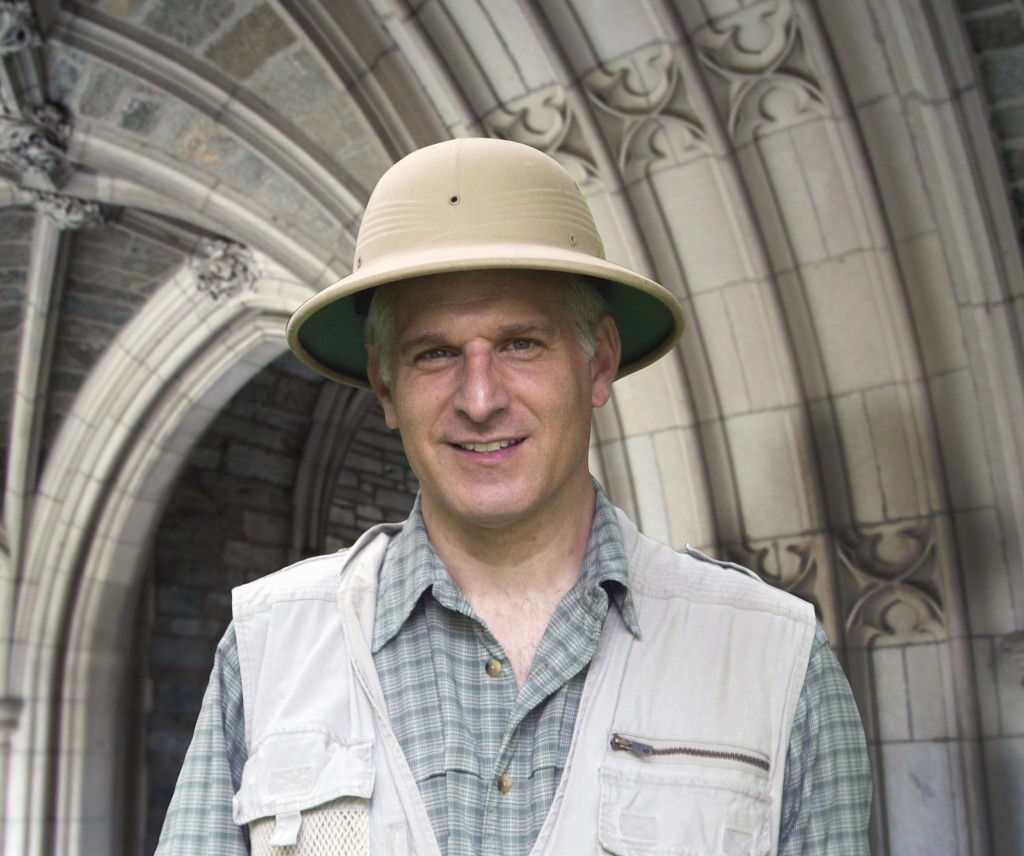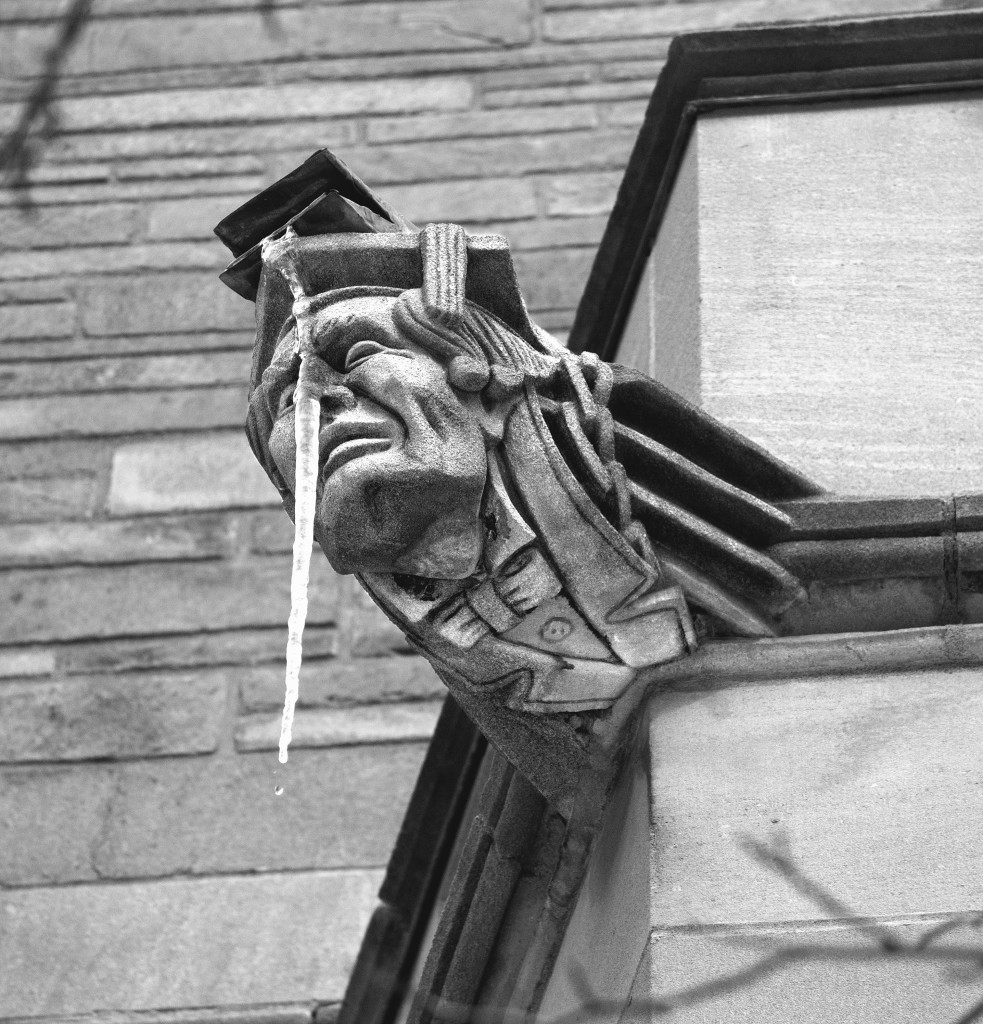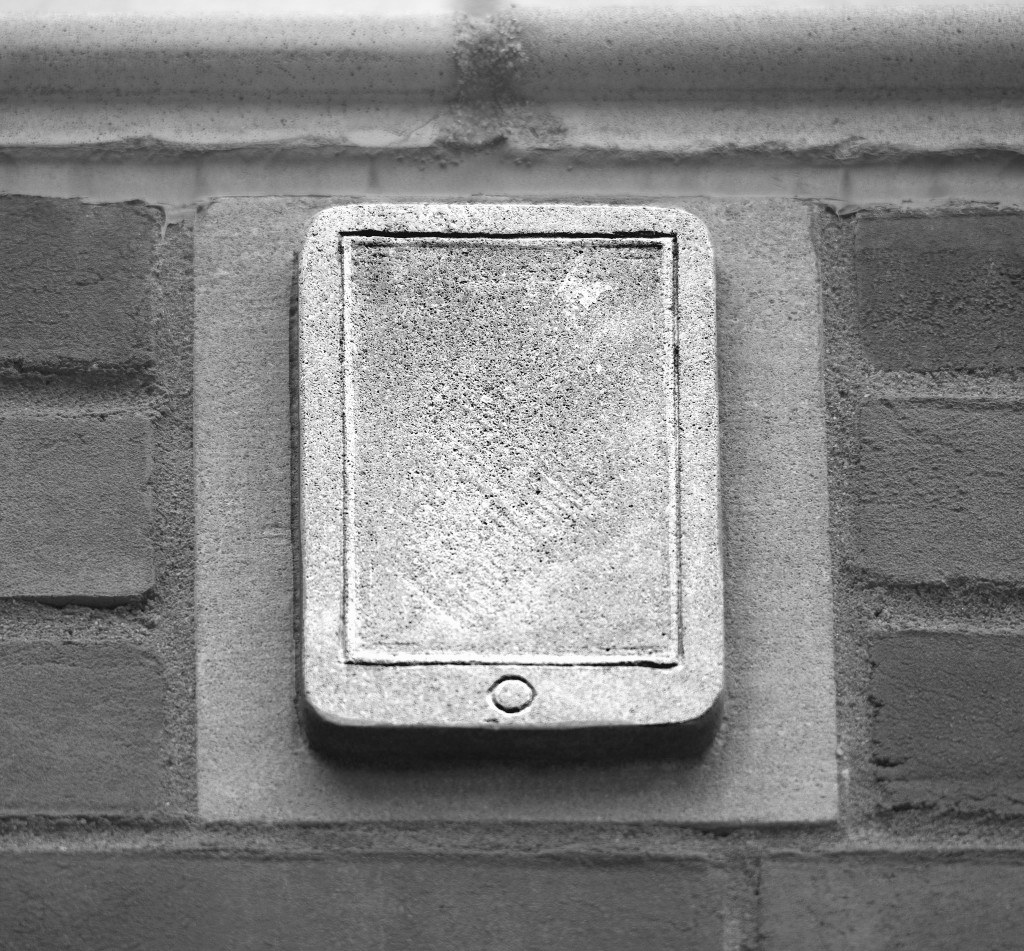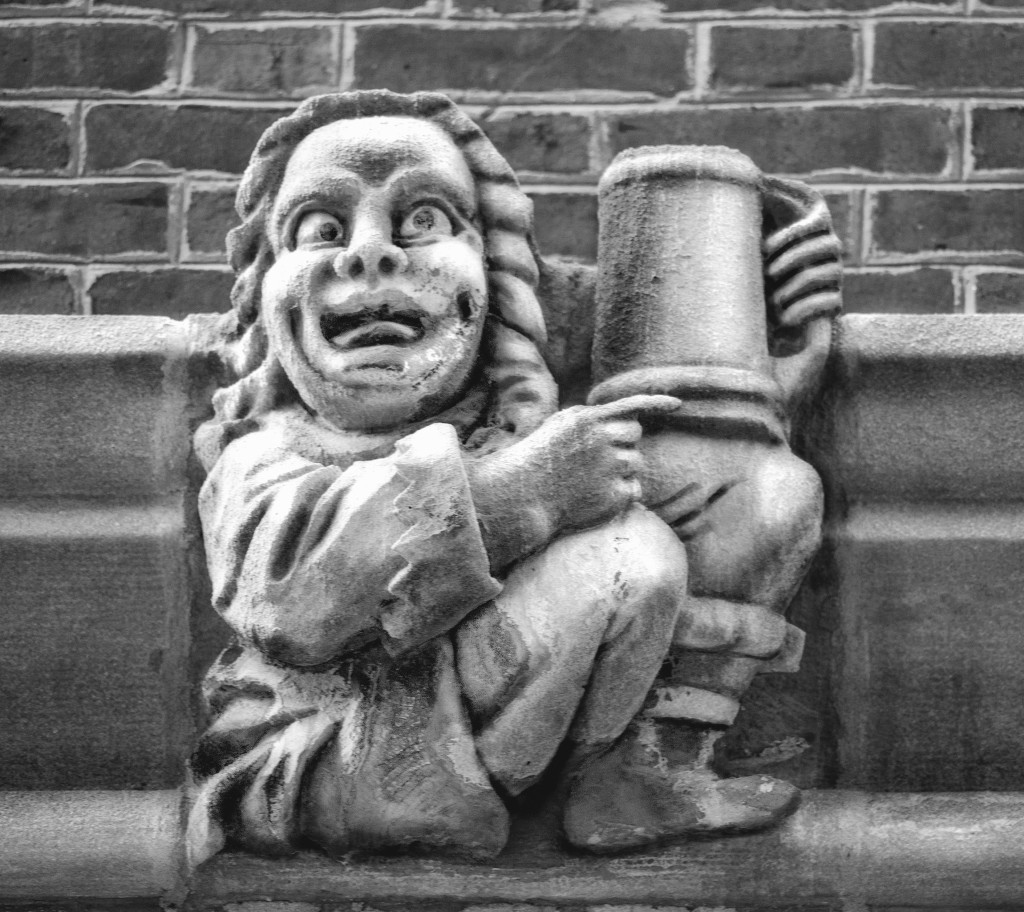Author and photographer Mathew Duman, wearing his trademark safari outfit and pith helmet, will present a walking tour through Yale University on August 15. The helmet is a tipoff that he’ll not be doing a straight-up tour of the campus. Rather, he’ll be taking participants on the hunt to spy the wide variety of grotesques and gargoyles in their natural habitat. Duman finds these silent guardians an intriguing case study in collegiate gothic architecture. They inspired him to write a book, The Grotesque Ten: Amazing Architectural Sculpture from Ten American Colleges and Universities, and to embark on a worldwide journey to search out these elusive works of art. Call it “Gargoyle culture.” Duman sat down with Antiques and The Arts Weekly to discuss his architectural fascination.
You grew up in Bethany, Conn., and attended Central Connecticut University. Is that where you first encountered a gargoyle?
CCSU has no gothic-style buildings, so there are no gargoyles. However, while studying there I participated in an exchange program and spent time in northwest England. I became fascinated when I saw authentic gothic architecture while touring the country. I learned that what we Americans consider “old” and what Europeans consider “old” are two very different things! Spying figures in the architecture made me realize that this wasn’t history from a book but from the lives of actual people who lived long ago. I also realized that this sculpture went unnoticed by most people. Later I discovered that I was guilty of the same offense! Back home, I had grown up around Yale University but never noticed the profusion of grotesque sculpture throughout the university’s architecture.
Where have your photographic trips taken you?
I spent two semesters in England and also a summer in Italy while I was a student. Later, I traveled to Africa — Malawi, Zambia and Botswana — and then to Australia and New Zealand.
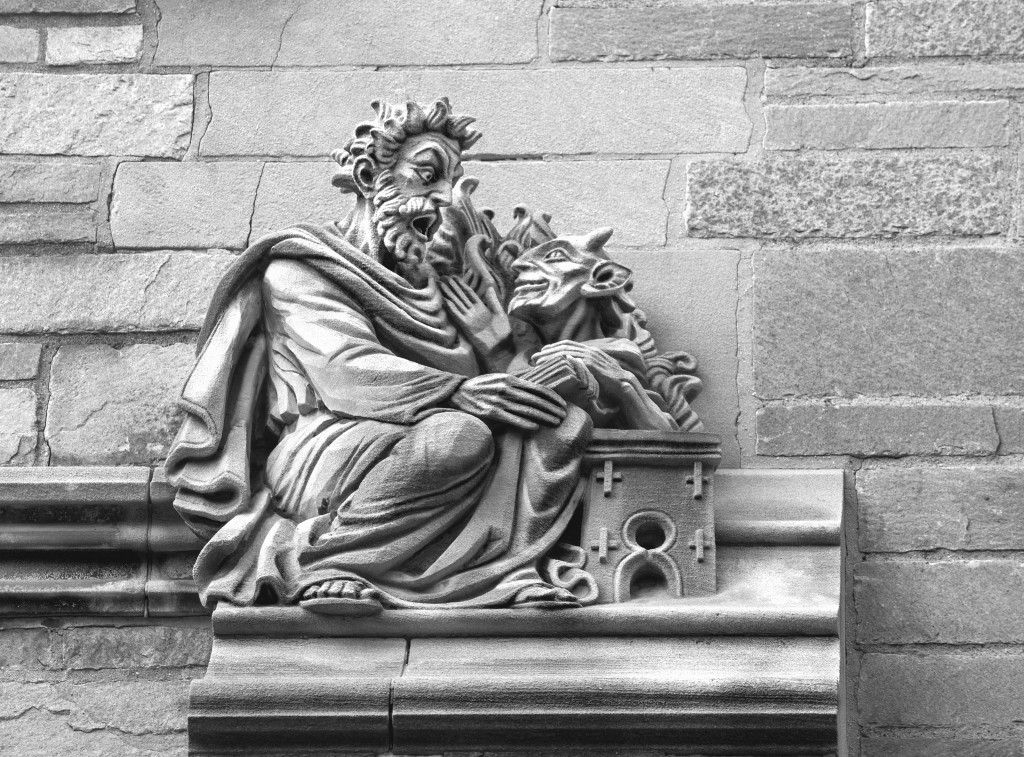
At Davenport College at Yale, Dr Faustus is shown summoning a demon as a warning against unchecked greed and hubris.
How did medieval European architecture find its way to US college campuses?
Early in America’s history, our colleges did not have the cultural status they possess today. They were also very young compared to the medieval universities of Europe. American colleges began adopting historic styles of architecture, such as the classical and gothic styles, to forge a visual connection with the long-established schools of Europe in order to increase their status. An important factor in the selection of gothic specifically was as a reaction to the industrial revolution. By the mid-Nineteenth Century, the industrial revolution had firmly taken hold and some people considered mass production a threat to individual expression. Gothic was chosen by many institutions because it was seen to celebrate the individual and individual craftsmanship. Architects would also put subtle features into their buildings to imply a larger and colorful history. This resulted in an increase in the prestige and venerability of American colleges in society and in turn, their donations and endowments increased as well.
When you’re not out walking, you are known to give talks on the subject. How are these conducted?
I go to libraries, historical societies and other organizations and give a lecture. This is accompanied with “slides” featuring photographs I’ve taken at different schools to illustrate my points. In addition to showing grotesques from different schools, I explain the different types of grotesque. I also explain the collegiate gothic architectural style and a few techniques used by the designers to make their buildings seem much older than they really are!
Which schools make up the “Grotesque Ten,” and which has the most examples?
The Grotesque 10 schools are: Yale University, Trinity College in Hartford, Conn., Bryn Mawr College, the City College of New York, Duke University, Northwestern University, Princeton University, University of Chicago, University of Pennsylvania and Washington University in St Louis.
I’ve never counted but for sheer quantity of sculpture: I’d say either the University of Pennsylvania or the University of Chicago. Each has huge concentrations of grotesques around their campuses.
What do you believe are the key personality factors in shaping your perspective on this type of sculpture?
I have a deep appreciation for art, but I love comedy and satire as well. Grotesques offer unique combinations of these types of expression in an almost unlimited variety. They also can be subversive and, as I mentioned before, frequently ride below the radar. Interpreting grotesques can be like solving a riddle. It’s a mystery until, all at once, everything clicks into place and makes sense. While some represent the lofty views of the university as a whole, others are additions by individual masons and thus their personal commentary.
As sculpture, what is the intrinsic purpose of the grotesque as it relates to architecture?
Grotesques serve to add successive layers of interest to their buildings in order to draw viewers to them. People on my tours often ask me why most grotesques are very small. Consider the approach to a gothic structure: a gothic building seen from a few blocks away is attractive through its general form and features, including spires, bay windows, towers, arches, etc. Get closer, and you begin to see filigree and other decorative features. Get even closer and you’ll realize that some of these features are figurative sculpture. In order to interpret their meaning, you must get even closer to see the complete picture. In this way, grotesques are a key feature in drawing passersby to the building. Also, the use of grotesques, with their exaggeration of reality, are a literal way of expressing ideas. So a gothic building can literally wear commentary on its walls. An example is seen on Davenport College at Yale, where Dr Faustus is shown summoning a demon as a warning against unchecked greed and hubris.
Some are also utilitarian as well as decorative, no?
Correct. There are grotesques and there are gargoyles. These terms have become confused over the years. Architecturally, a “grotesque” refers to any figurative sculpture on or in a building. Grotesques come in many different types and one of these is the gargoyle. The term “gargoyle” specifically refers to the type of grotesque that channels rainwater off of the roof and away from the building. This keeps the water from cascading down the walls and weakening them by eroding the mortar between the blocks. An example would be the Law Professor gargoyle at the Yale Law School, which I photographed in the winter.
Classical sculpture embodies the ideal – beautiful goddesses, muscular athletes, stately emperors, cherubic imps, etc. To what is the grotesque a reaction?
In my opinion, grotesques are art, but brought down to a personal level. While some are idealized, most have some degree of caricature that expresses the opinions and emotions of their creators. I particularly enjoy the humorous pieces. Aside from the joke, I feel there is a greater significance to these. Looking at a humorous grotesque, you can laugh at a joke that someone had conceived and skillfully set up generations ago and by doing that, you are connecting with them on a personal level, over a great gulf of time!
Describe the earliest and the most recent examples you have found.
Both examples come from Yale, the collegiate gothic movement is said to have begun during the mid-to-late Nineteenth Century. Yale’s Dwight Hall was built in 1842 and displays grotesques in the form of human and animal faces near the tops of its towers. These are very crudely carved when compared to Yale’s later grotesques. In 2017, Yale completed two new residence colleges and both harbor many grotesques. These buildings, like Yale’s earlier college gothic structures are meant to look very old but some of the grotesques on these new buildings possess modern concepts and themes, such as an Electronic Tablet (iPad) on Pauli Murray college.
What lesson do you want folks to take away from your book, guided tours and lectures?
Look at the details! I’d like people to be more aware and appreciate their surroundings. Many times on my tours I’d hear participants exclaim, “I’ve been around these buildings for many years and have never seen any of this sculpture!” These days, we have so many distractions competing for our attention, we do not take a good look at our environment. In writing my book, I’ve found that you can find intriguing details all around you, even in familiar places. It’s also about not just accepting things the way they are but asking why things are the way they are. Do some research and these details can reveal a variety of fascinating concepts and stories.
— W.A. Demers
[Ed. Note: More images of grotesques and gargoyles, as well as details about them, can be seen at Duman’s website www.thegrotesque10.com. He can be contacted by email at mathew.duman@yahoo.com.]

